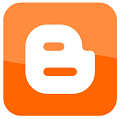WRITING GLOBALLY
Connected Educator- Are you a connected Educator? Have you created a learning environment that enables you to pursue your own curiosities, become an active participant in your own educational goals, design a relevant learning experience, and promote creativity, utilizing digital tools and resources?
 Blogger (www.Blogger.com) -- Google's Blogger is an easy blog platform, as you can literally be registered and blogging in minutes. Blogger is so easy to use, that any teacher new to the digital classroom can be registered for Blogger and blogging in minutes. Blogger is a Hosted Blog: A hosted blog is one whose software is maintained by a company for its users. The advantage of using a hosted service is that you don’t have to worry about installing software, software updates, server maintenance, or bandwidth capacity. Blogger is Google’s free blogging service. It takes just a minute to start a blog through Blogger. Blogger offers a wide selection of colorful themes and templates to choose from. Customizing the layout of your blog is as easy as dragging and dropping elements into place. You can add additional authors to your blogs. If you have a Gmail account you already have a Blogger account. Just sign into your Gmail account and in the top menu select Blogger from the “more” drop-down menu.
Blogger (www.Blogger.com) -- Google's Blogger is an easy blog platform, as you can literally be registered and blogging in minutes. Blogger is so easy to use, that any teacher new to the digital classroom can be registered for Blogger and blogging in minutes. Blogger is a Hosted Blog: A hosted blog is one whose software is maintained by a company for its users. The advantage of using a hosted service is that you don’t have to worry about installing software, software updates, server maintenance, or bandwidth capacity. Blogger is Google’s free blogging service. It takes just a minute to start a blog through Blogger. Blogger offers a wide selection of colorful themes and templates to choose from. Customizing the layout of your blog is as easy as dragging and dropping elements into place. You can add additional authors to your blogs. If you have a Gmail account you already have a Blogger account. Just sign into your Gmail account and in the top menu select Blogger from the “more” drop-down menu. Kidblog (http://www.kidblog.org) -- Kidblog is a robust student blogging site. Create a class and individual blogs for every student. Then students have their own web space to journal, respond to writing prompts or just express themselves. Commenting on each others' blogs is half the value of student blogging! Teachers have lots of control of blog privacy (public or private blogs) and comment privacy (public/private comments and previewing incoming comments before they're seen by students). Check out my session resources on student blogging for ideas and how-to's.
Kidblog (http://www.kidblog.org) -- Kidblog is a robust student blogging site. Create a class and individual blogs for every student. Then students have their own web space to journal, respond to writing prompts or just express themselves. Commenting on each others' blogs is half the value of student blogging! Teachers have lots of control of blog privacy (public or private blogs) and comment privacy (public/private comments and previewing incoming comments before they're seen by students). Check out my session resources on student blogging for ideas and how-to's.Twitter- (https://twitter.com/twitter) Twitter is a free microblogging service founded in 2006 by Jack Dorsey and Biz Stone. Tweets are 140-character blurbs of information. Users can include links to other content in their tweets, pictures, and broadcasts can be public or private. For basics on how to use the social network, check out The Beginner’s Guide to Twitter.

No comments:
Post a Comment